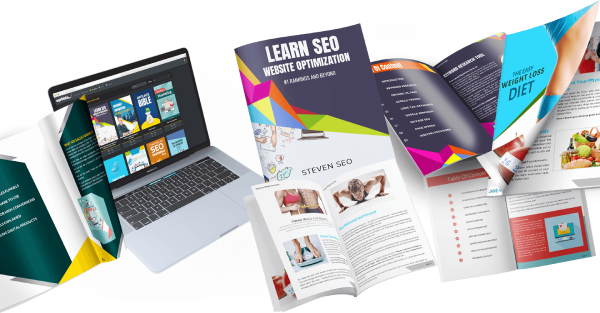Why Is Traffic Considered Paramount?
The term “traffic” refers to the visitors who access a website seeking products or services. The presence of such traffic can result in profitable leads. Revenue generated from online advertisements and/or sales on the website are primarily attributed to focused traffic, that is, visitors who seek the specific products or services that the website offers.
Different websites have varying amounts of daily visitors, with some receiving only 50, while others may accumulate 500 and 5000 respectively. Despite this, it is plausible that the website with the least amount of traffic makes the same amount of money as the one with higher traffic, due to having focused visitors who are interested in purchasing the products or services offered. Focused traffic is considered top-quality, as it often results in successful sales.
The key factor in generating revenue from a website is acquiring traffic, as a higher volume of traffic typically yields more income. Therefore, it is crucial to meticulously track the sources of this traffic. Any website owner should be familiar with what generates high-quality traffic and how to obtain it.
Outlined below are the top five traffic sources, along with their corresponding marketing techniques, that attract visitors to the website. This valuable insight can aid in boosting and expanding website traffic.
1. Search Engines and Search Engine Optimization
Search Engines like Google are responsible for 98% of website traffic. When targeted keywords or phrases rank highly in Google’s search results, the traffic generated tends to be of high quality. An effective On-Page SEO strategy and earning relevant backlinks from related websites can significantly increase website traffic.
Strive to generate excellent page content that provides genuine value to those visiting your site. Continuously supplement your website with more content pages. A website with over 1000 pages will yield higher traffic compared to one with only 5 to 20 pages. Consider your website content as a long-term objective. Aim to add at least one to three pages of top-notch content each day. With time, your website will have an excess of 1000 pages, consisting of remarkable content that attracts visitors just like flowers full of pollen draws in bees – it benefits both parties.
Having plenty of great content on a website is the ideal approach to attract more visitors to the site. As a general rule, the more high-quality content a website offers, the greater its number of site visitors.
2. Article Marketing
Article marketing is a highly efficient means of generating quality traffic. To be successful, one must compose concise and engaging articles of roughly 300 words that incorporate the website’s keywords and phrases in a sensible and organic manner.
Afterwards, incorporate your Keyword / Key phrase-based links in the article resource box. Publish these articles on popular article directories like Hubpages, Go Articles, Buzzle, among others. This successful method has been tested and proven to effectively attract targeted traffic to your website.
3. PPC – Pay Per Click Advertising
Caution should be exercised when using PPC as it can prove to be a costly method of attracting traffic to your website. However, it is also the most efficient way to generate quality traffic to your site at a rapid pace. Selecting a suitable PPC campaign requires careful consideration and evaluation, but once you have identified the right one, you can swiftly expand it. It’s crucial to closely monitor the increase in your targeted site visitors, and Google Analytics is an excellent tool for carrying out such monitoring.
Microsoft Adcenter and Yahoo Marketing have now joined forces. This combination does produce decent traffic flows. Google Adwords is excellent, but Google Adwords can be a real pain to work with and have maybe become a tad too expensive. Having said that, if you have the financial resources, please do not ignore Google Adwords.
4. Social Media Marketing
Social media platforms like Facebook, Twitter, and LinkedIn can generate considerable web traffic and promote a website through word-of-mouth.
Bookmarking the pages of your website on certain online platforms can result in a substantial increase in traffic. Although this traffic may not be long-lasting, many visitors tend to subscribe to your website’s newsletter. This enables you to communicate with them in the future.
Using YouTube videos is also a highly effective method for generating website traffic. When seeking long-term sources of targeted visitors, it is important to consider social media and video-sharing platforms.
5. Email Marketing / Follow-up Lists
Increasing the number of regular visitors to your website can be achieved through this effective method.
Regularly create various contact lists to facilitate follow-ups. Boost engagement with an engaging, informative newsletter or tempting discount offers. This strategy may attract more visitors than anticipated.
Attempt to include Viral Messages in your Email content. If your website’s newsletter offers useful information, recipients may share it with their acquaintances and colleagues, urging them to subscribe to your newsletter. This form of word-of-mouth marketing attracts a substantial amount of targeted traffic.
Press Releases, Banner Ads, RSS Feeds, and Off-line Advertising are alternative traffic sources that can provide targeted traffic and are worth considering.
If your website offers products or services, it would be beneficial to explore the option of creating affiliate partnerships with other websites as it can significantly increase traffic to your site.
Email marketing tips to get you started
1. Create an email marketing plan.
In order to simplify the planning process, we have outlined certain effective methods that should be taken into account while creating an email marketing plan.
Identify your target audience.
No matter what you sell, you need to have a clear idea of who your audience is in order to effectively communicate with them. Mailchimp lets you dig a little deeper to segment users within your audience so you can send them personalized and targeted emails that help increase engagement, build trustful relationships and generate greater ROI.
Signup sources
The information on the sign-up methods and locations of your subscribers is crucial data obtained from your signup form. As an e-commerce enterprise, linking your store to Mailchimp, being aware of the subscribers’ sign-up locations can provide better insight on effective communication strategies and marketing priorities.
Divisions and categories
Once you’ve identified smaller collections of people within your larger audience, you’ll be able to create groups and segments to send more relevant and personalized emails to your recipients—and the more relevant the campaign, the better the results. There are times when you’ll want to send to your entire list, but by segmenting users and taking advantage of Mailchimp’s segmentation tools can significantly increase the click-through rates and e-commerce orders your campaigns generate.
Make a choice regarding what to write.
After identifying your intended recipient, it is essential to consider the content of your message. Ask yourself what you would like to convey to your target audience and what your content marketing plan is. When composing emails, it is critical to have a clear goal in mind and to ensure that the message resonates well with your subscribers, taking into consideration their interests and preferences as stated during the sign-up process.
Define your sending schedule and objectives.
The frequency of sending emails to customers is not fixed, but excessively frequent emails are likely to cause subscribers to ignore or unsubscribe. Depending on their preference, some blog or news website owners may send daily updates while others choose to send bi-monthly emails to maintain subscriber interest. It is best to decide the pace at which to send emails, and adjust based on unsubscribe and click through rates.
Create a timetable.
To stay on course, establishing a content calendar is a viable solution for planning your campaigns, blog entries, social media updates, etc.
The frequency of your email marketing will be influenced by your field, the nature of the content you distribute (content marketing plan), and how often you send out emails.
2. Design your emails
Tips for designing
In order to create effective email campaigns, it is important to place emphasis on the message itself and to stick to a simple design. Our recommendation is to organize the components of the campaign in a hierarchy and to position the key details or main message at the top for quick and easy viewing, particularly for those in a rush.
Create your own templates through coding.
Do you want to have greater authority over your email design? You can choose to create your own HTML template and upload it onto Mailchimp.
3. Test your emails
Conduct testing across various email clients and internet service providers.
Because email clients vary, the formatting of your campaign in Mailchimp might not appear identical to your readers. Make certain to review the emails on both desktop and mobile devices, as responsive designs can result in variations.
Distribute trial emails to colleagues and acquaintances.
In case you know of any acquaintances or colleagues who can proofread your email and provide their perspective on the structure, you may send them a trial email to allow them to preview the campaign straight in their mailbox.
Discover the most effective version through A/B testing campaigns.
Do you feel uncertain about which subject line will receive the most opens and clicks? Are you considering a specific time when your customers are more likely to purchase through your campaign? Performing an A/B test enables you to try out various email versions and observe how the alterations you make affect your outcomes.
4. What you can do with marketing automation
Automation differs from typical campaigns as it involves a specific email or sequence of emails that can be established and overlooked. By employing automation, communication with customers can be simplified, from an introductory series of emails to post-purchase follow-ups and even incentivized rewards. This allows for greater attention to be devoted towards generating content and augmenting return on investment (ROI). Furthermore, order notifications can be created, dispatched, and monitored, serving as updates for customers regarding their store transactions.
5. Measure your performance
Your marketing plan can be enhanced moving forward by making use of the marketing analytics data derived from your Mailchimp reports.
Clicks and openings
The aforementioned statistics are the most evident ones to evaluate campaign engagement, as they disclose the effectiveness of your subject lines and campaign content among a specific audience. Nonetheless, it’s crucial to take into account the comparison of your open and click through rates with those of your counterparts in the industry, or else, you’ll be assessing your statistics in isolation.
Data related to electronic commerce.
Once your store is linked to Mailchimp and e-commerce link tracking is activated for your campaigns, you can access subscriber purchase information through campaign reports, subscriber profiles, and the account dashboard.
increased significantly after the introduction of new content and targeted marketing strategies. The website experienced a notable surge in visitor numbers following the implementation of fresh content and precise marketing tactics.
Sending campaigns can increase traffic to your website or online store. Mailchimp offers several integrations that enable you to monitor website traffic or e-commerce activity trends following a campaign.








